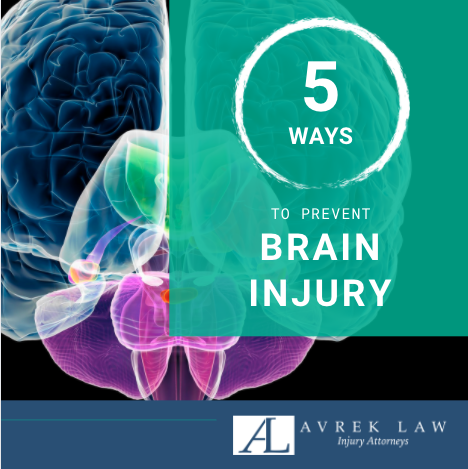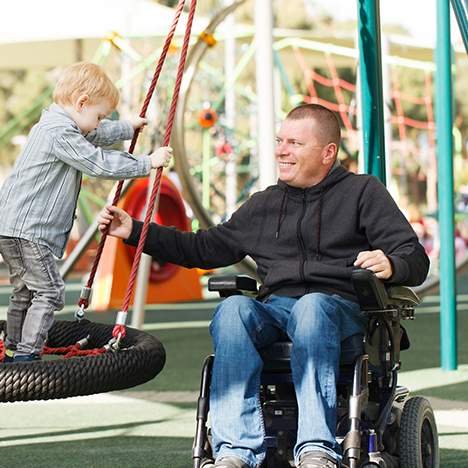Each March, for more than 30 years, the Brain Injury Association of America (BIAA) has led the United States in observing Brain Injury Awareness Month by engaging the public in an annual awareness campaign. The BIAA is a primary authority on diagnosis, treatment, disease management, research, and life challenges associated with brain injury, and is a leading influencer of public awareness and public policy change.
The campaign, which is supported by most of the major health organizations in the country, aims to reduce stigma and educate the public on important brain injury facts and statistics. In addition to raising funds for those affected, one of the campaign’s primary goals is spreading awareness about the effects of living with a brain injury, as well as the impact this can have on the injured individual and their loved ones. The theme for the 2021-2023 campaigns is “More Than My Brain Injury,” which carries a goal of destigmatizing brain injuries, empowering survivors, and promoting the types of support available.
The BIAA campaign also seeks to provide information about the different causes of brain injury, along with how to help mitigate risks in sustaining such injuries.
Interesting Facts about Traumatic Brain Injury
A traumatic brain injury (TBI) is a change in brain pathology caused by an external force or trauma. A traumatic injury can be closed (non-penetrating) or open (penetrating). According to the BIAA, more than 5.3 million children and adults in the United States are living with a permanent brain injury-related disability – that’s one in every 60 people.
According to brain injury facts and statistics provided by the Center for Disease Control and Prevention (CDC), brain injury is the leading cause of death and disability in the U.S., and at least 2.8 million Americans suffer a TBI each year. Of these injuries:
- 47.9% are from falls
- 17.1% are from being struck by or against something
- 13.2% are from motor vehicle accidents
- 8.3% are from assaults
- 13.2% are from other or unknown causes
A TBI’s damage can range from mild (a brief change in mental status or consciousness) to severe (an extended period of unconsciousness or memory loss after the injury). The TBIs that occur most each year are mild, commonly called concussions.

5 Ways to Help Reduce the Risk of Brain Injury
There are many ways to reduce your chances of experiencing a traumatic brain injury, including:
- Wear a seat belt every time you drive or ride in a motor vehicle.
- Don’t drive while under the influence of alcohol or drugs.
- When you or your children ride a bike, motorcycle, or ATV, or play a contact sport, wear a helmet or suitable headgear.
- Prevent older adult slips and falls by evaluating in-home safety and the risk of falling, including medications that may cause dizziness, eyeglass prescriptions, and addressing any strength or balance issues.
- Make living and play areas safer for children, including window guards, safety gates on stairs, and soft-material in an outdoor play area.
Common Brain Injuries from Car Accidents
During a car accident, the victim can be subjected to a sudden, violent movement, which can cause the head to come into contact with the steering wheel, dashboard or window. Common brain injuries from car accidents can include:
- A concussion is a mild TBI, and is the most common brain injury in an accident. Typically mild and non-fatal, concussions require the victim to rest to recover, but a more serious concussion may need medical attention.
- Whiplash occurs when a person’s head is forcefully thrown backward then forward due to a rear-end collision. This can result in mild to moderate TBI symptoms because the brain may be bruised and damage can be caused to internal tissue and blood vessels.
- A coup-contrecoup TBI occurs in two places – at the side of the brain impact, as well as the opposite side of the brain. The brain moves within the skull upon impact, so the victim suffers two brain injuries at the same time.
- A contusion, or bruise, within the brain usually occurs when something impacts a victim’s head, like the blow of a sharp object in a car accident. Patients with brain contusions often require emergency treatment to address the brain swelling.
- Diffuse axonal injuries occur when extreme forces are exerted on the head and brain. When the brain moves around in the skull, connections between the brain and the body can be interrupted and victims often end up in comas.
- Open head injuries involve a cracked or fractured skull, as well as a brain injury. A penetrating brain injury is serious because an object penetrates the skull and the brain, and this type of injury may require surgery to relieve pressure on the skull from a swelling brain.

How to Find a Brain Injury Lawyer Near Me
Despite the Brain Injury Association of America’s mission to spread awareness, including brain injury facts and statistics that might help identify a TBI, many serious brain injuries aren’t caught until it’s too late. Unless completely obvious, traumatic brain injuries are often not immediately diagnosed after an accident, which means that many people who have suffered this trauma do not receive the compensation they are entitled to. If you have been diagnosed with a TBI, or suspect you may have one, it is always recommended that you work with an experienced attorney who is educated on the types of brain injuries and their consequences.
The team of skilled personal injury attorneys at Avrek Law Firm know how to build strong TBI injury cases so the maximum amount of compensation may be recovered for victims. Whether the traumatic brain injury was caused by a car accident, an assault, or a fall, we have what it takes to make sure that the responsible party pays for your damages and injuries. Our proven track record of recovering Over $2 Billion for clients speaks for itself. Contact us or fill out a form for a free consultation – we’re here to help!
